 When it was launched the USS Barbel was the most advanced attack submarine in the world in all respects except one; it’s powerplant. By the 1950s submarine design was going through a series of revolutions, undoubtedly led by the US Navy. German WW2 technology had kick started postwar submarine development, but new innovations in hull form and propulsion were led by the US with countries like Britain, Russia and Netherlands contributing to the wider story.
When it was launched the USS Barbel was the most advanced attack submarine in the world in all respects except one; it’s powerplant. By the 1950s submarine design was going through a series of revolutions, undoubtedly led by the US Navy. German WW2 technology had kick started postwar submarine development, but new innovations in hull form and propulsion were led by the US with countries like Britain, Russia and Netherlands contributing to the wider story.

CLICK IMAGE FOR HIGH RESOLUTION
In 1953 the USS Albacore (AGSS-569) was launched to test and demonstrate a revolutionary new hull design which owed more to the 1800’s Holland type submarines and airships, aided significantly by the research of British female mathematician Hilda Lyons. The hull form was initially known as the Lyon shape but soon became known as the Albacore hull, or less precisely the teardrop hull. Until then virtually all submarines had a boat-like bow to cut through the waves on the surface, but the pointed bow of the Albacore was optimized for underwater performance.

The highly streamlined Albacore was capable of astonishing speeds; 33kt for a diesel submarine. But it wasn’t a fighting machine. From the outset she was designed without torpedo tubes which was contentious but ensured that she was available for vital research and testing. Like the famous German Type-XXI Elektroboote she had double hull construction with the outer hull providing streamlining as well as ballast tanks. Barbel was in many respects the front-line version of Albacore with a similar hull form but room for a torpedo room with six tubes. The tapered single-screw stern meant that all the torpedo tubes were forward firing. Albacore is remembered in part for its unusual ‘ X ‘ form tail and contra-rotating propellers but at the time that Barbel was launched, the Albacore still had its original single-screw and ‘+’ tail surfaces. Albacore also had the bow hydroplanes removed but Barbel, requiring shallow-water maneuverability, retained hers although they were subsequently relocated from the bow to the sail. The Barbel also dispensed with the Albacore’s troublesome ‘pancake’ rotary engines in favor of less powerful but more reliable conventional units, limiting her speed to a still impressive 25kt.
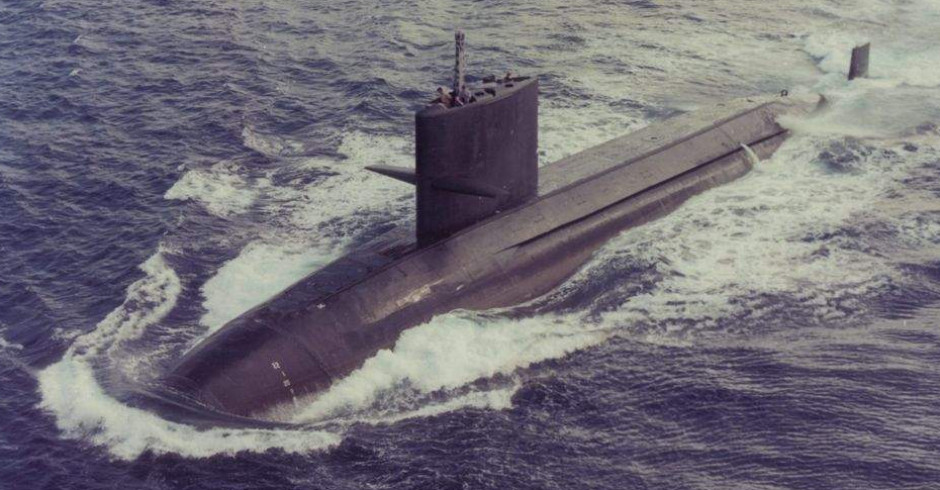
Only three Barbel Class boats were built, the last diesel-electric attack submarines in the US Navy. The reason was that, in parallel to the Albacore hull, the Navy was pioneering nuclear propulsion. The first nuclear boats retained comparatively conventional hull forms based on the Type-XXI U-boat to reduce risk. But nuclear submarines soon proved themselves capable of incredible underwater endurance with sufficient safety, and series production was switched 100% to nuclear submarines at the expense of the Barbel Class. In some respects the Barbel Class was a contingency against the failure of the nuclear submarine concept. However, just months after Barbel, the first Skipjack Class nuclear sub was laid down, combining the nuclear propulsion with the Albacore hull form. Unlike Barbel and Albacore however, Skipjack was a mostly single-hull boat, another trend within the US Navy. There is some truth in the popular belief that the US Navy built single-hull submarines and the Russians built double-hull submarines. But there were exceptions on both sides, and the Barbel was a completely double-hull design and the Russian CHARLIE was largely single hull.
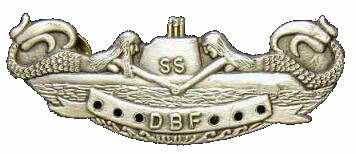 The advent of the nuclear submarine was not greeted with joy in many corners of the Submarine Force. For much of the 1960s, most operational submarines were still diesel boats although only the Barbel Class could be considered modern. The second-class citizen status of diesel boats was quietly resented and a certain pride grew up within the diesel boat community that they were still more reliable than the newfangled nuclear boats. Often Barbel and other ‘pig boats’ were called upon to stand in for broken-down nuclear boats. This was embodied in the unofficial DBF pin: Diesel Boats Forever. The pin, which was worn with pride, was actually designed aboard USS Barbel by ETR3(SS) Leon Figurido in 1969. Soon submariners who had transferred from diesel boats to nukes were wearing it aboard the nuclear navy, and there were attempts to stamp it out. But the pin remains a source of pride for many ex-submariners. More info at www.submarinesailor.com
The advent of the nuclear submarine was not greeted with joy in many corners of the Submarine Force. For much of the 1960s, most operational submarines were still diesel boats although only the Barbel Class could be considered modern. The second-class citizen status of diesel boats was quietly resented and a certain pride grew up within the diesel boat community that they were still more reliable than the newfangled nuclear boats. Often Barbel and other ‘pig boats’ were called upon to stand in for broken-down nuclear boats. This was embodied in the unofficial DBF pin: Diesel Boats Forever. The pin, which was worn with pride, was actually designed aboard USS Barbel by ETR3(SS) Leon Figurido in 1969. Soon submariners who had transferred from diesel boats to nukes were wearing it aboard the nuclear navy, and there were attempts to stamp it out. But the pin remains a source of pride for many ex-submariners. More info at www.submarinesailor.com

CLICK IMAGE FOR HIGH RESOLUTION
The Barbel Class served until the late 1980s. One, the USS Blueback (SS-581), is preserved as a museum in Portland, Oregon (Link: OMSI)
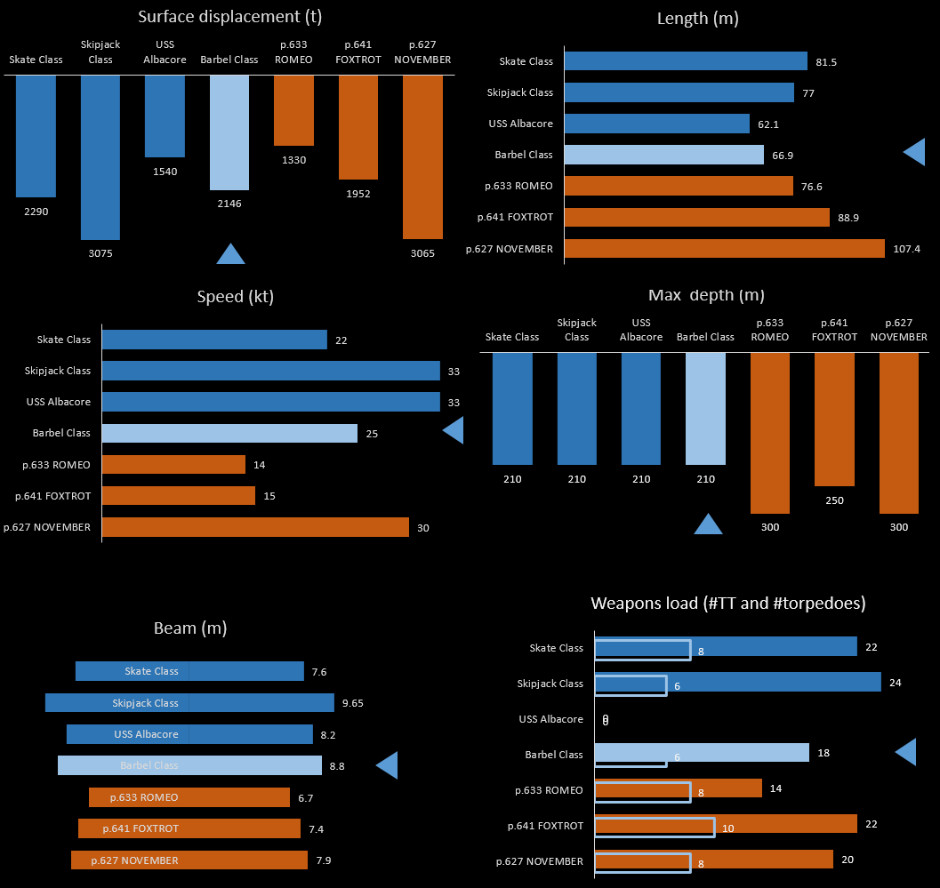
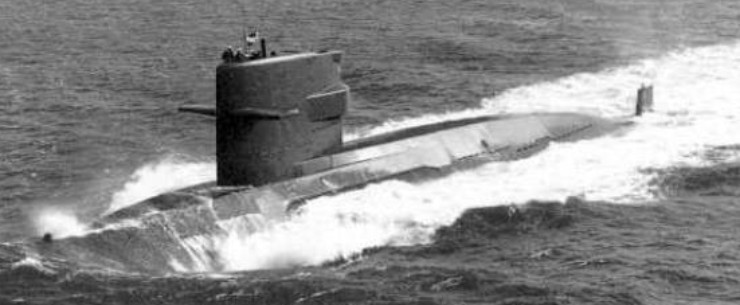
With most other NATO navies not pursuing nuclear submarines (the British and French being the exceptions) the Barbel was influential in NATO attack submarine design during the late 1950s and 1960s. The closest direct copy was the Dutch Zwaardvis Class. For a time the Royal Navy also pursued an Albacore-hull diesel submarine but this was dropped when Britain’s first nuclear submarine, HMS Dreadnought, was started. Instead the Royal Navy ordered an iterative improvement of the old fashioned Porpoise Class to save development costs. These Oberon Class boats were decent submarines but comparatively slow.
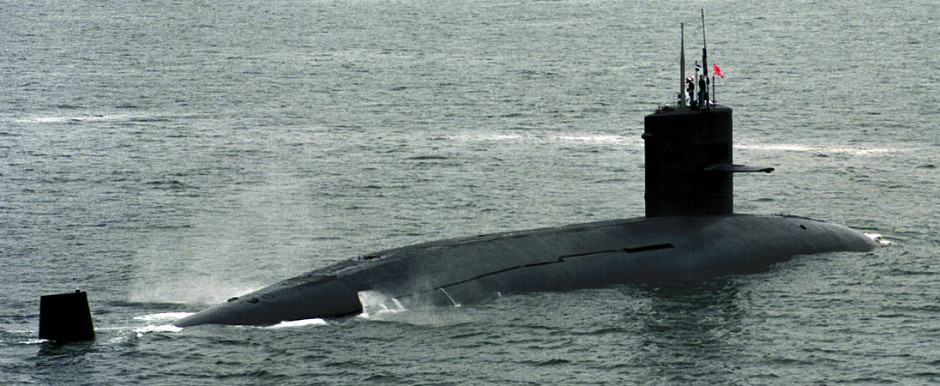
The Japanese Yushio Class submarine was also based closely on the Barbel Class, although coming over ten years later incorporated further advances such as a flank torpedo tubes to allow a larger bow sonar. Equipment was Japanese.
Related articles

 USS Halibut
USS Halibut

 USS Seawolf (SSN-575)
USS Seawolf (SSN-575)

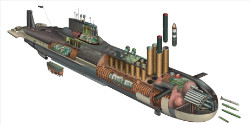 Russian Typhoon Class SSBN
Russian Typhoon Class SSBN

 History of Israeli subs
History of Israeli subs
